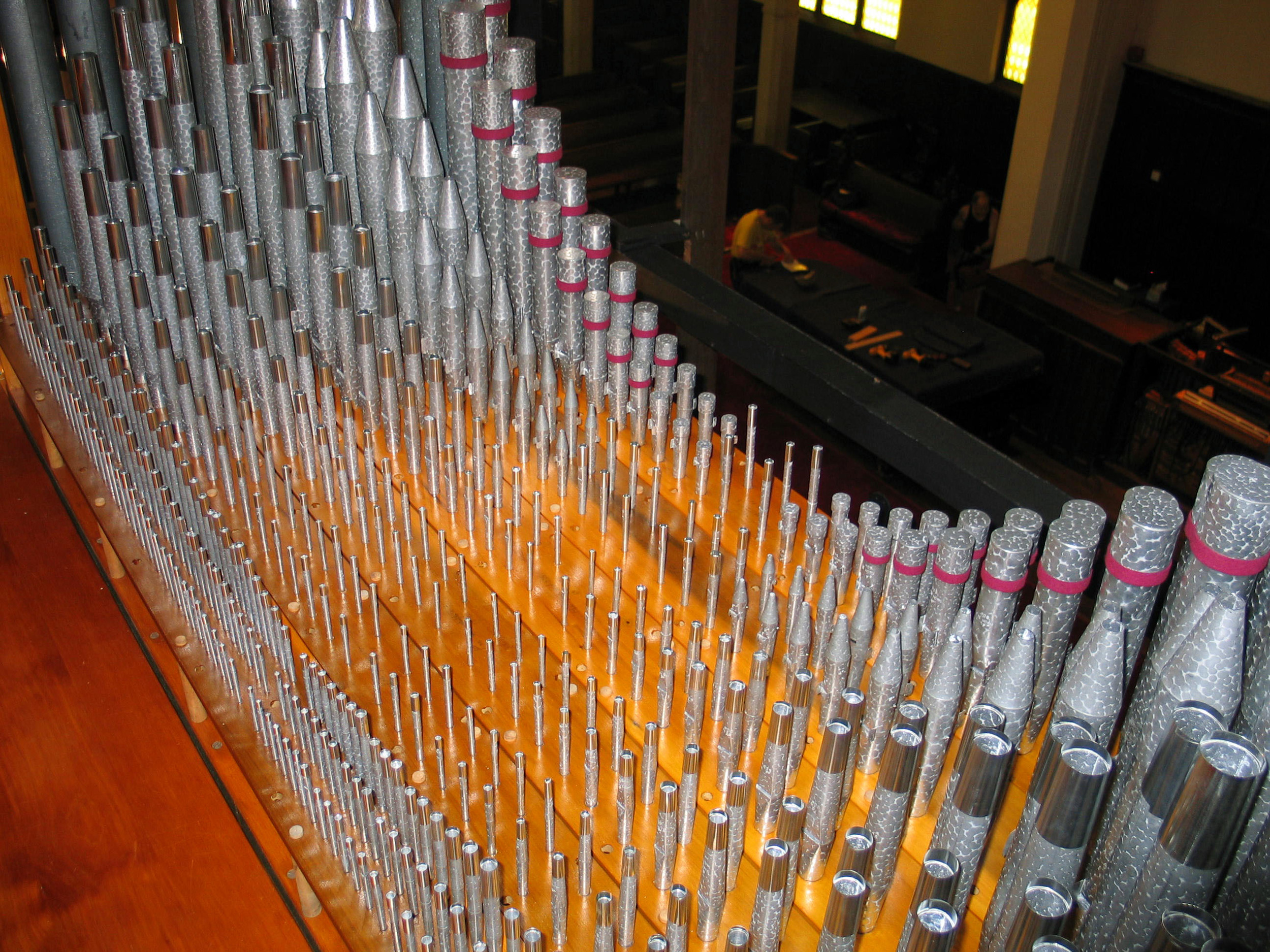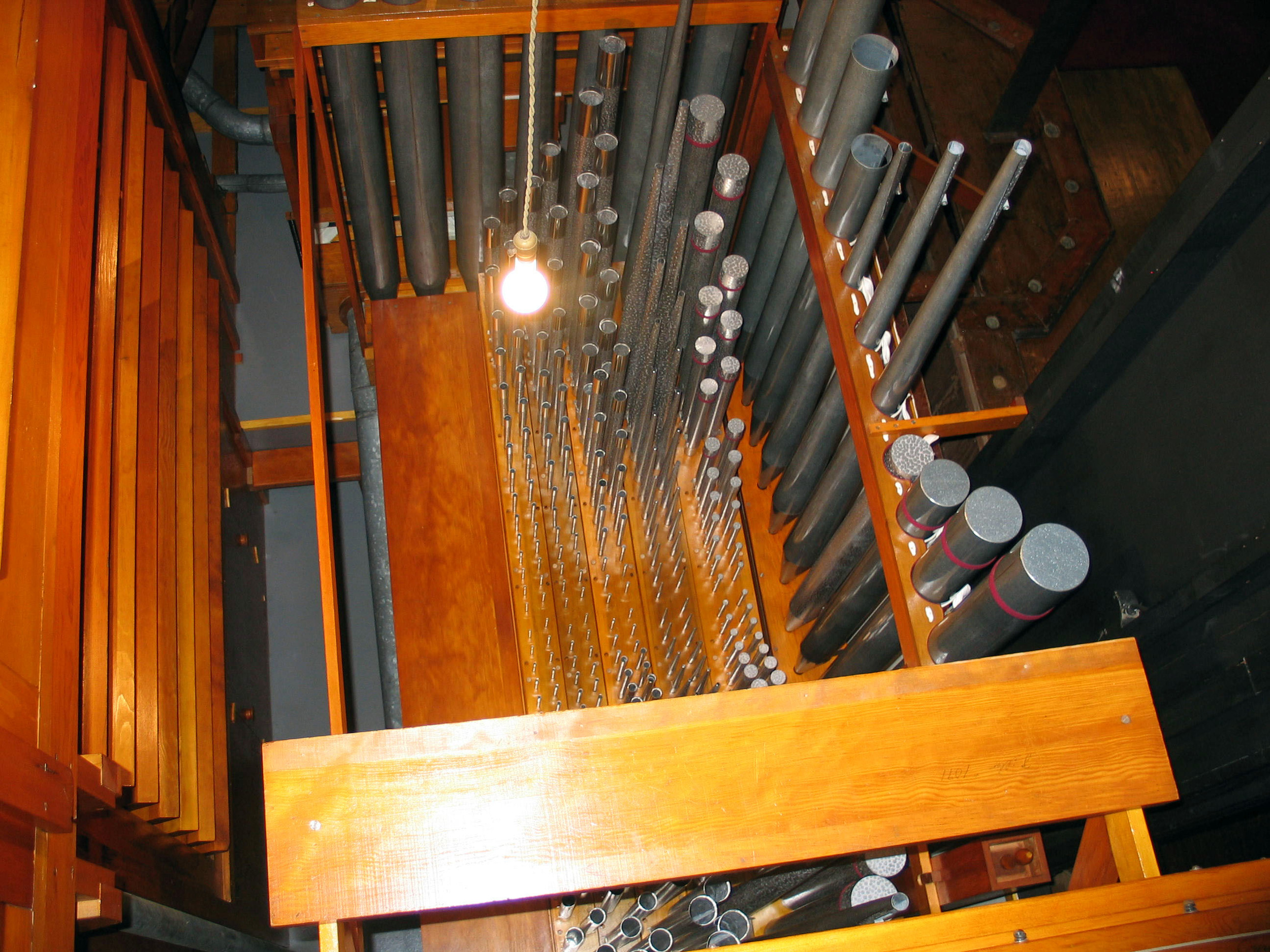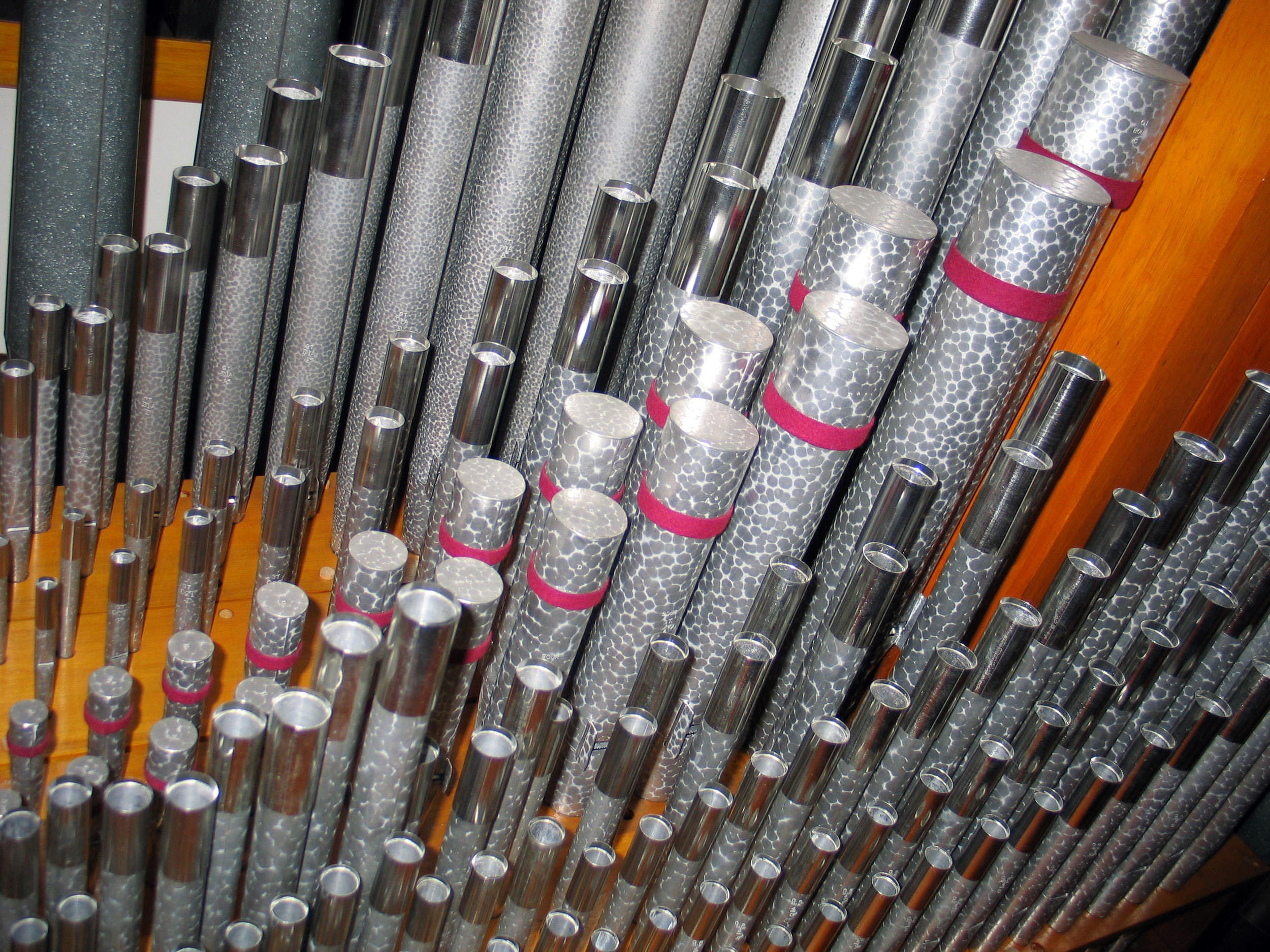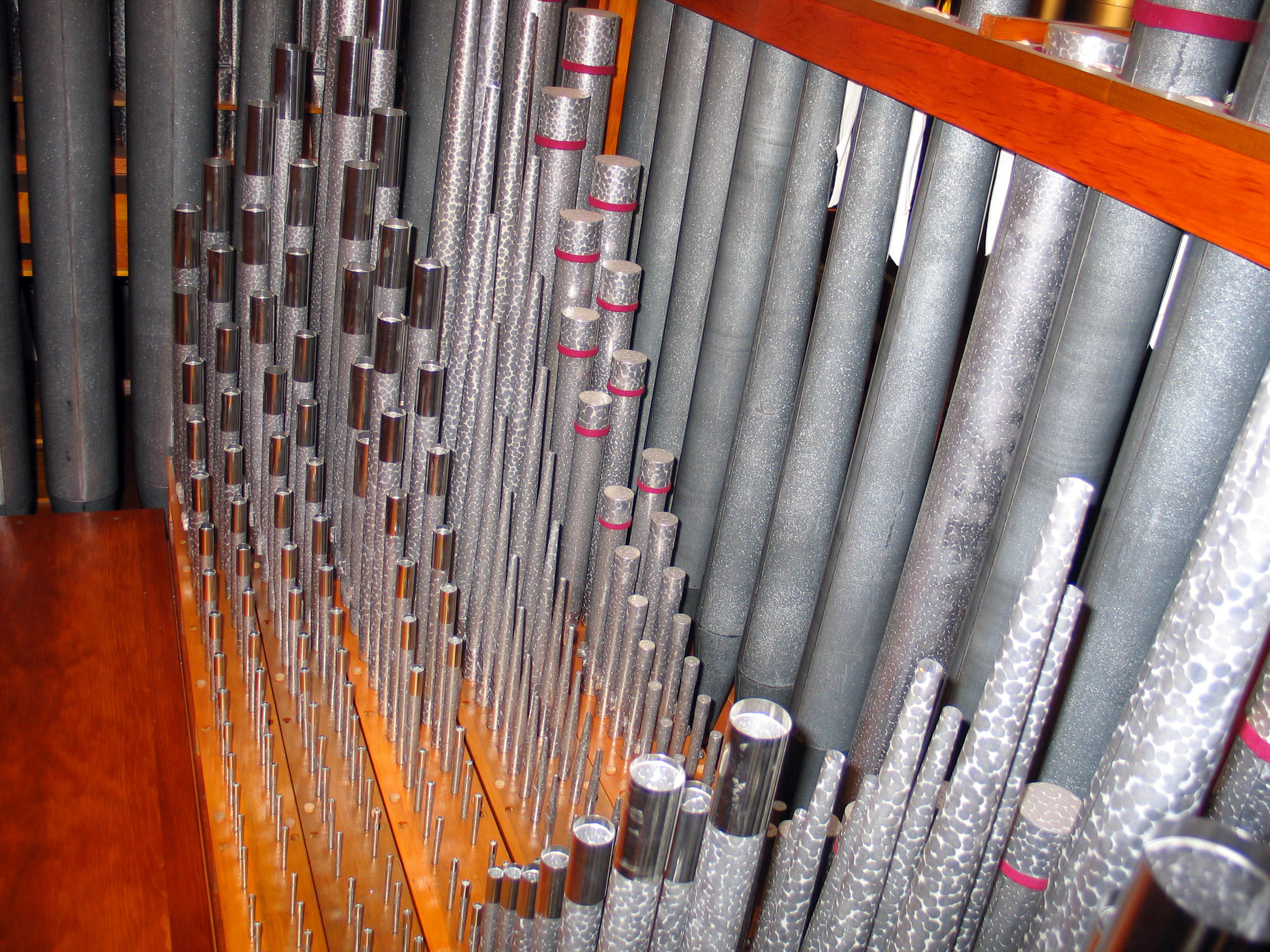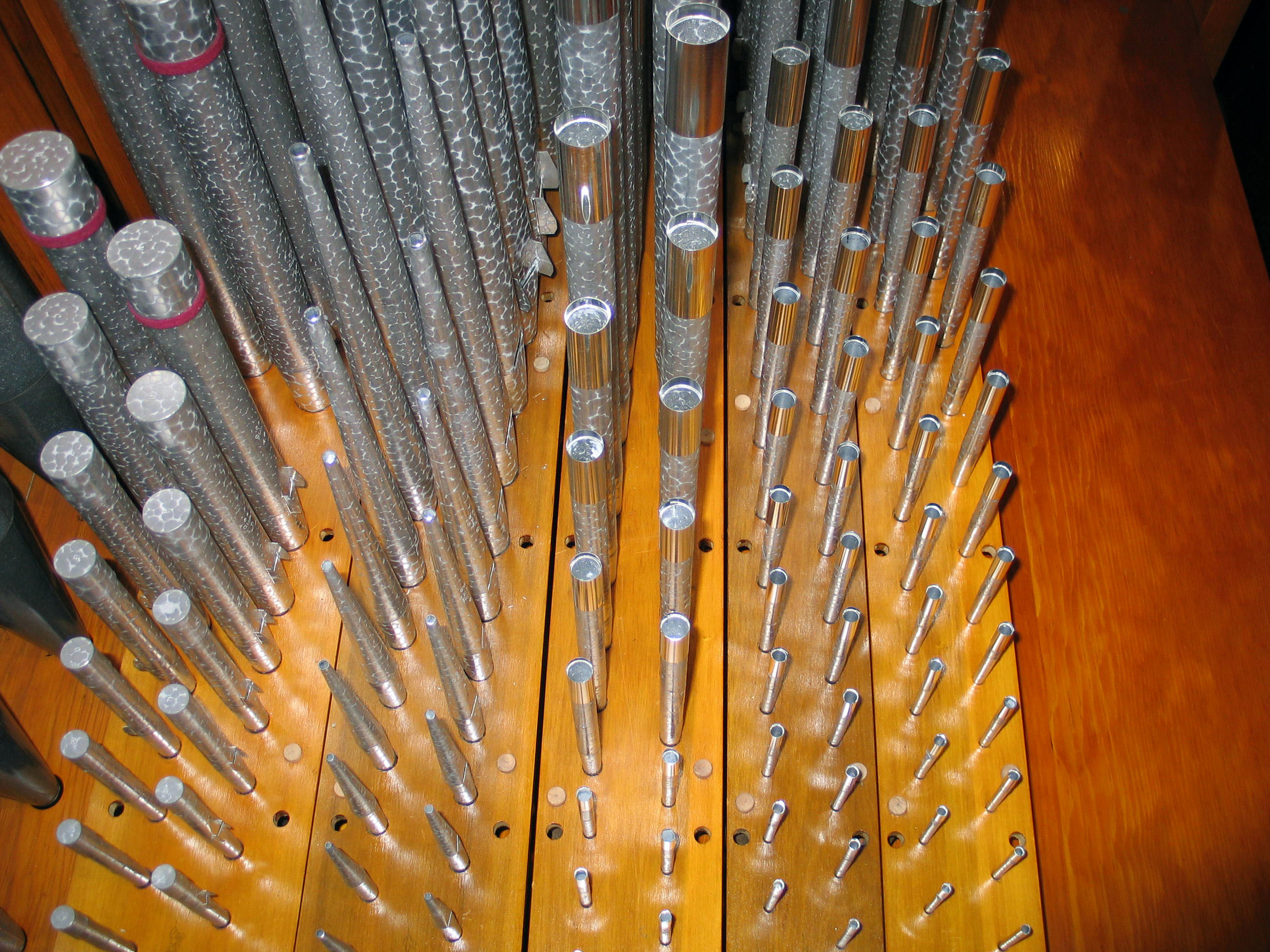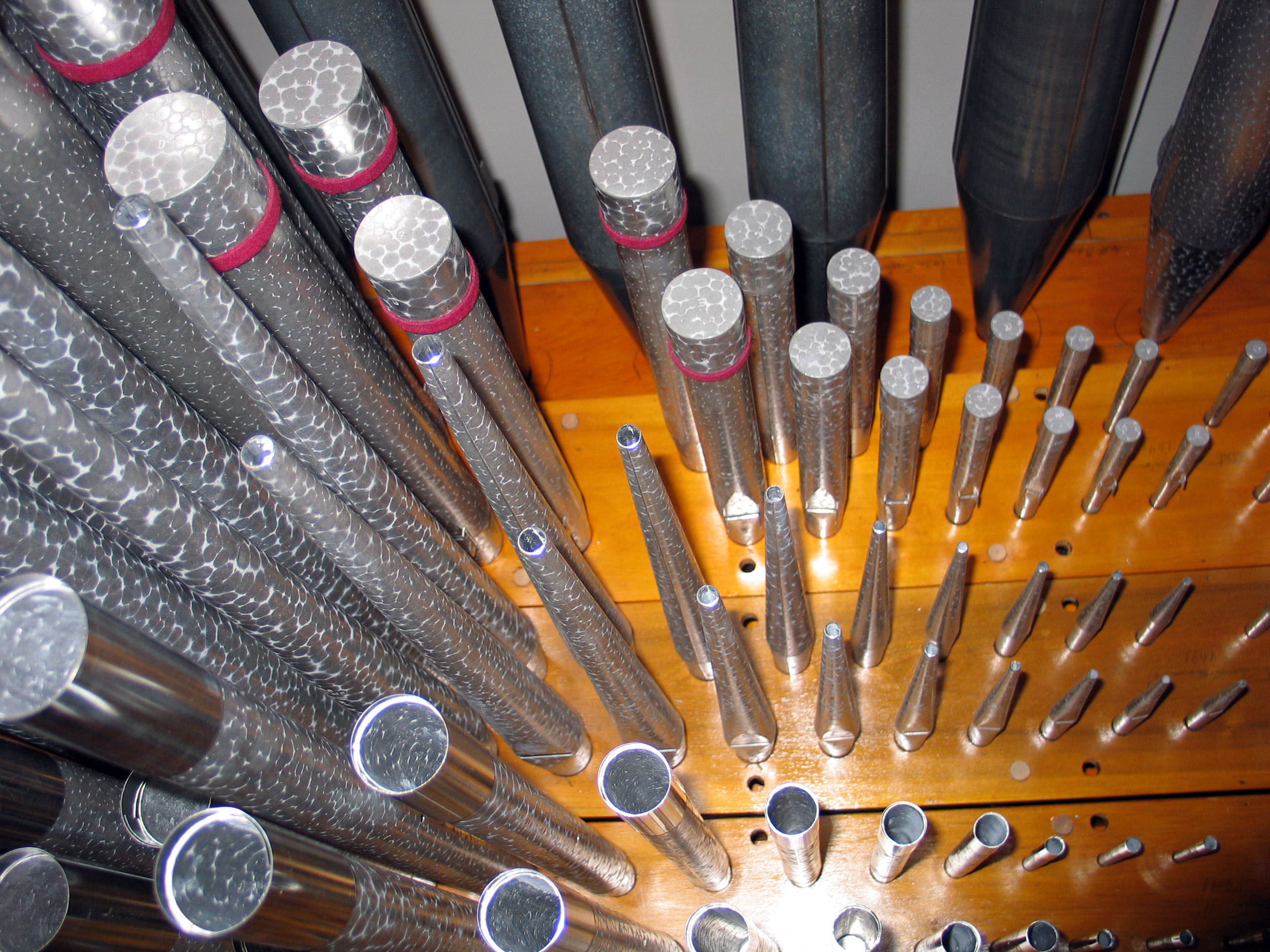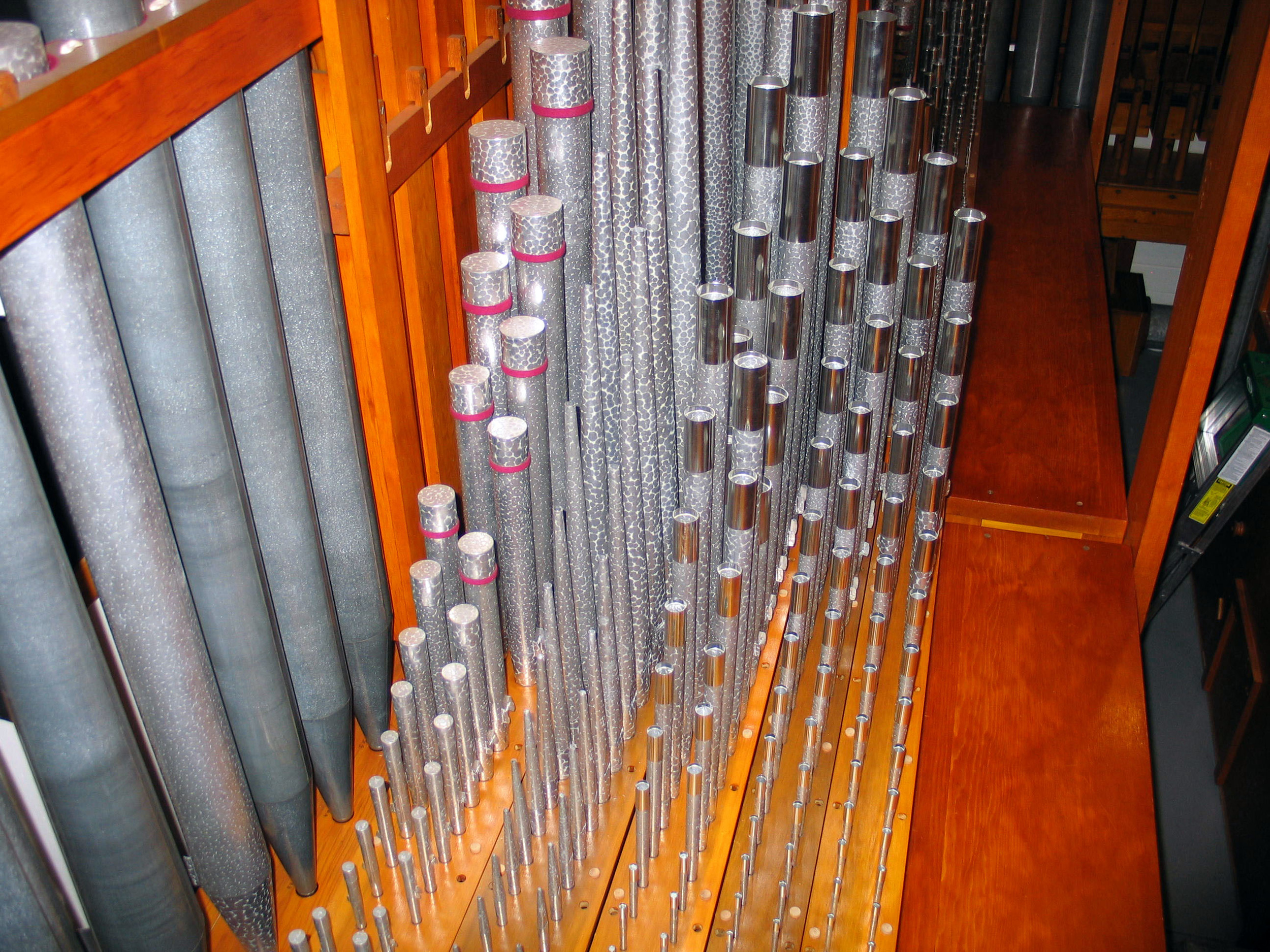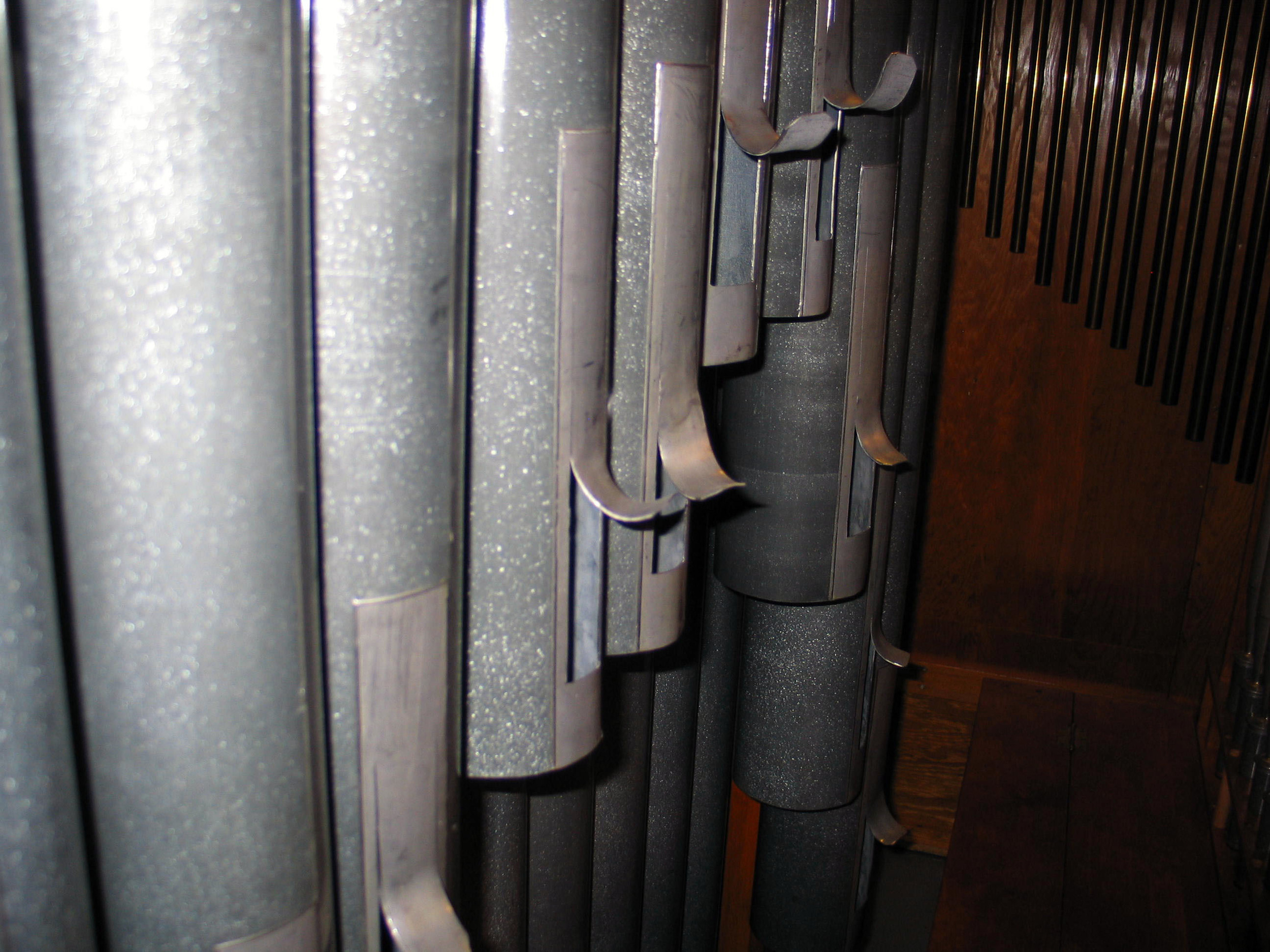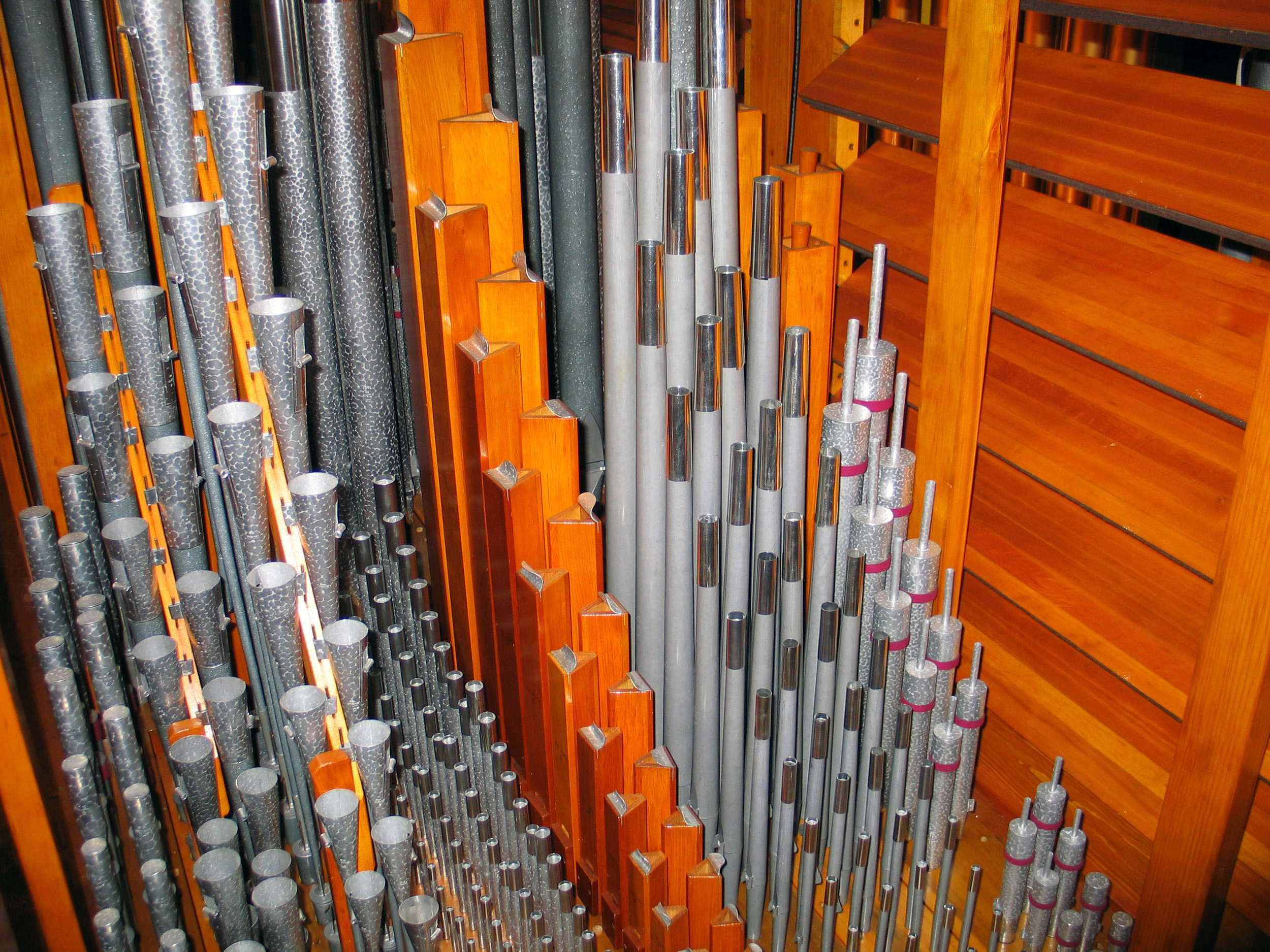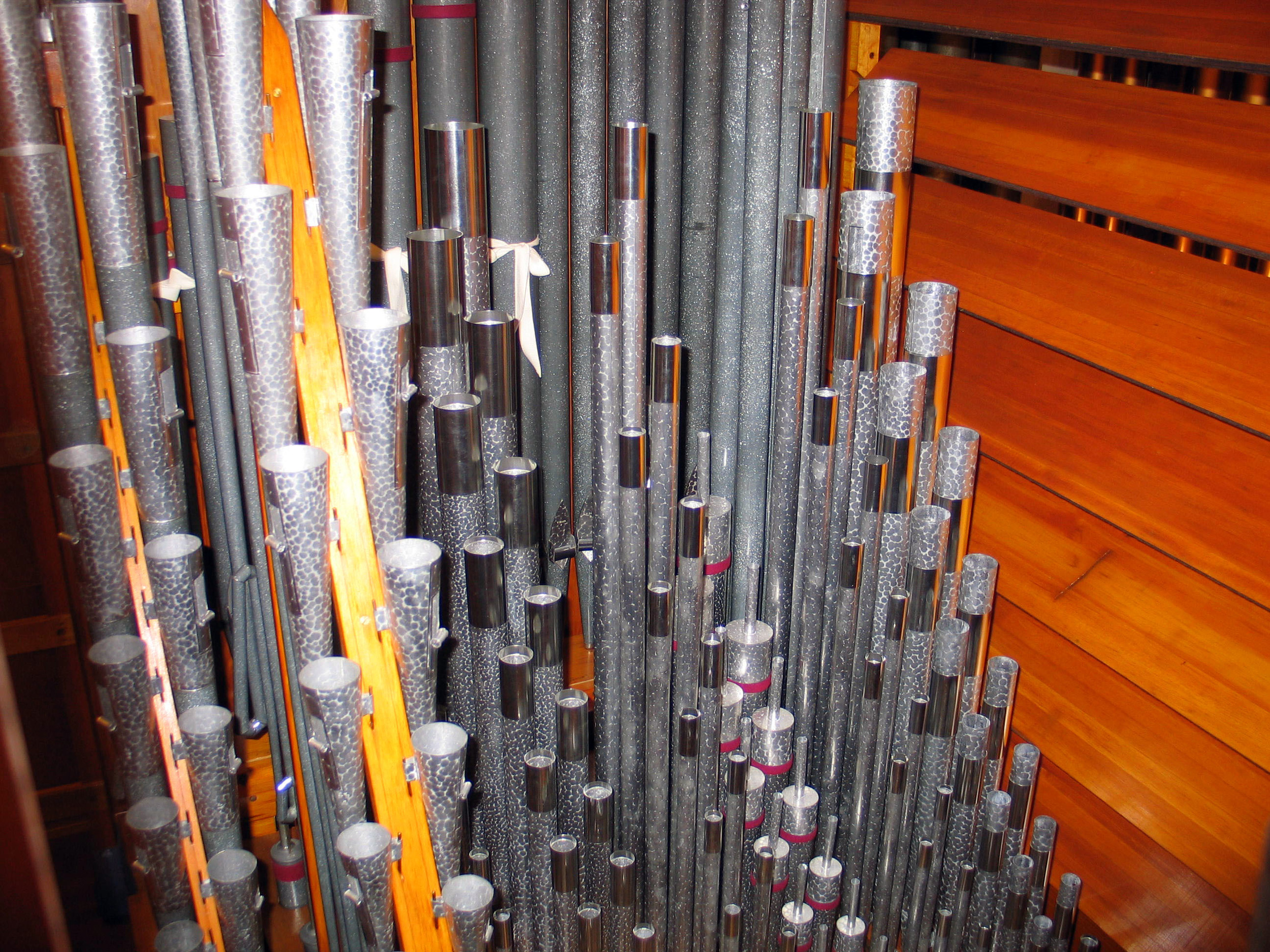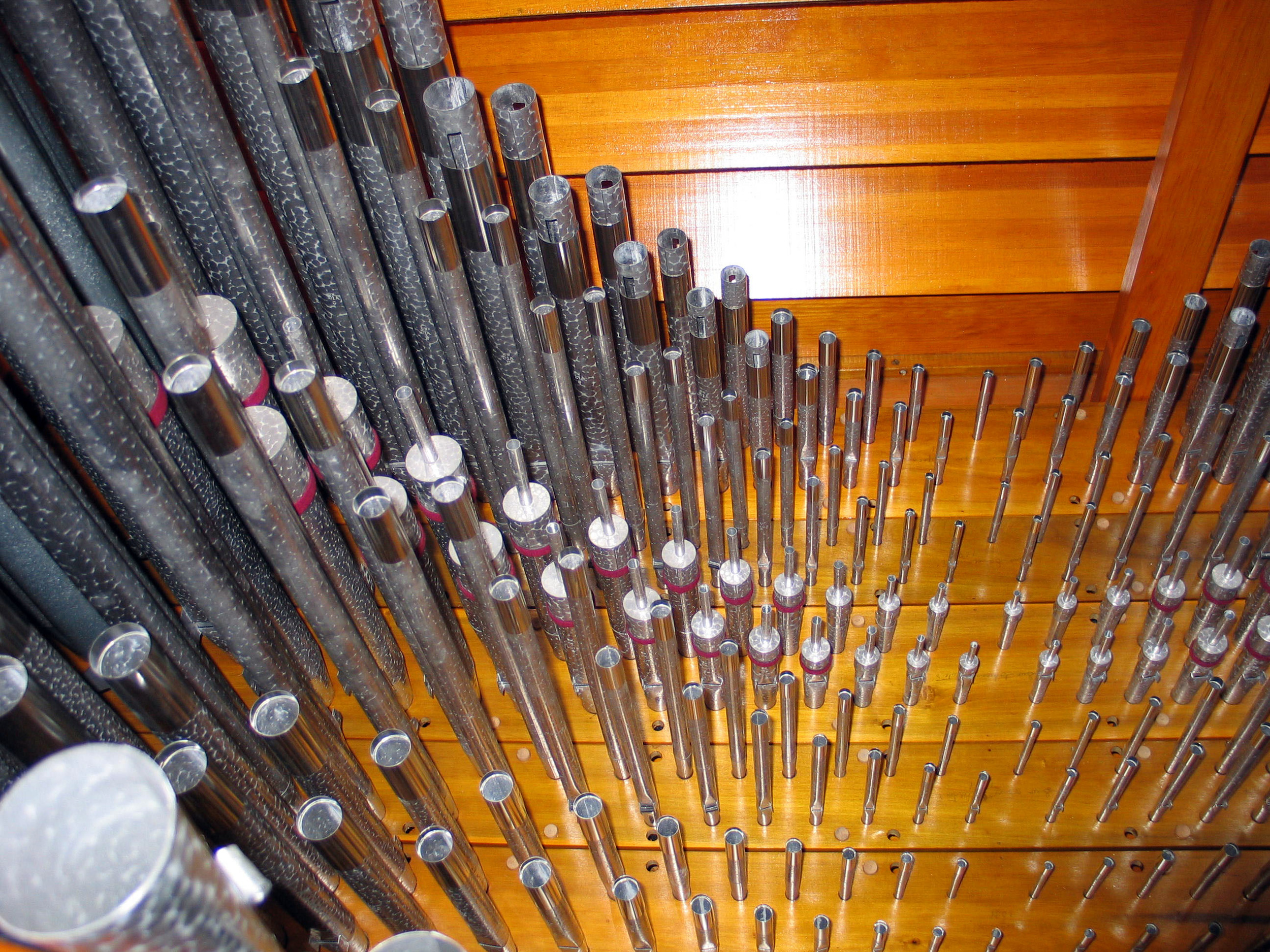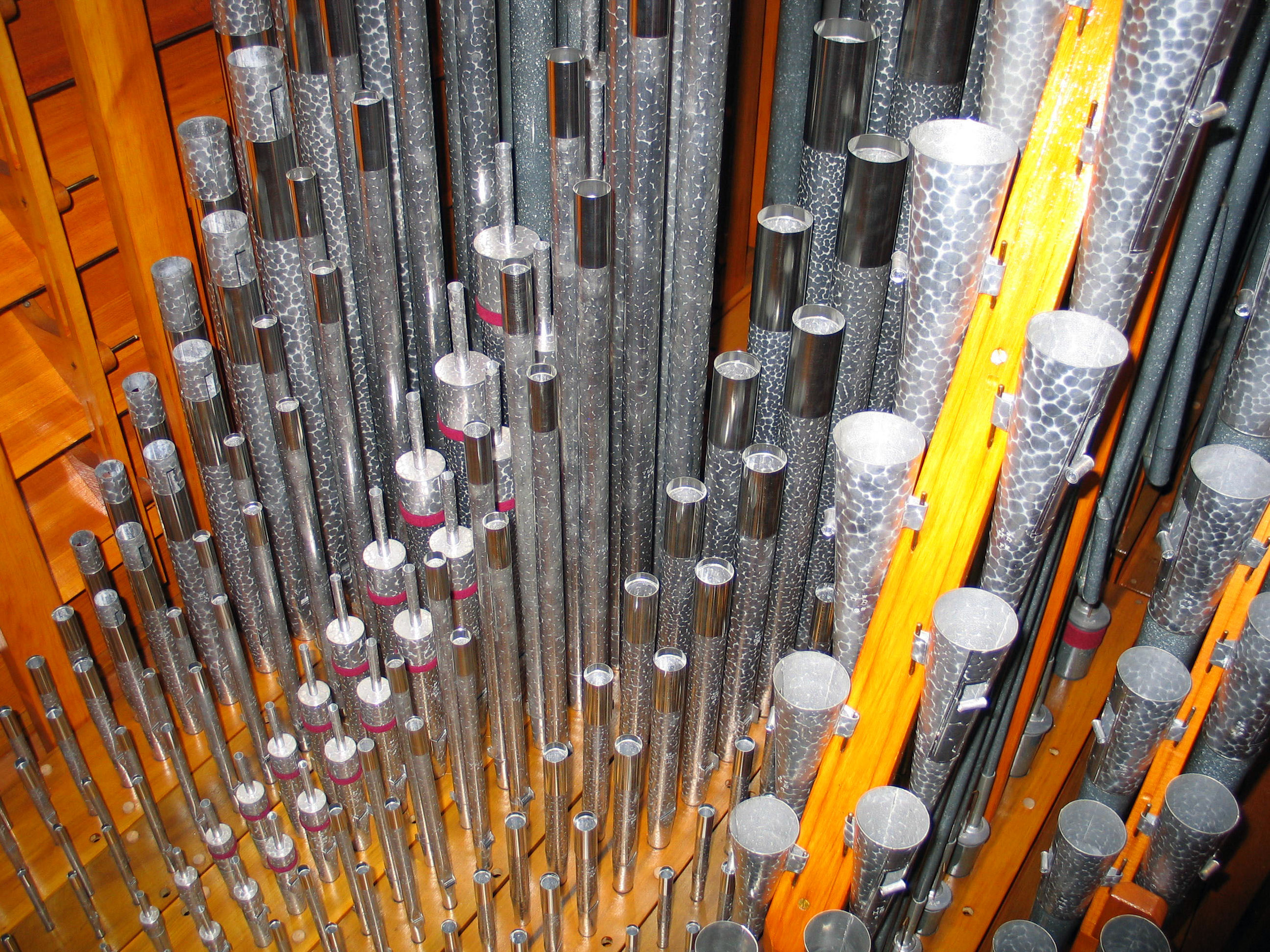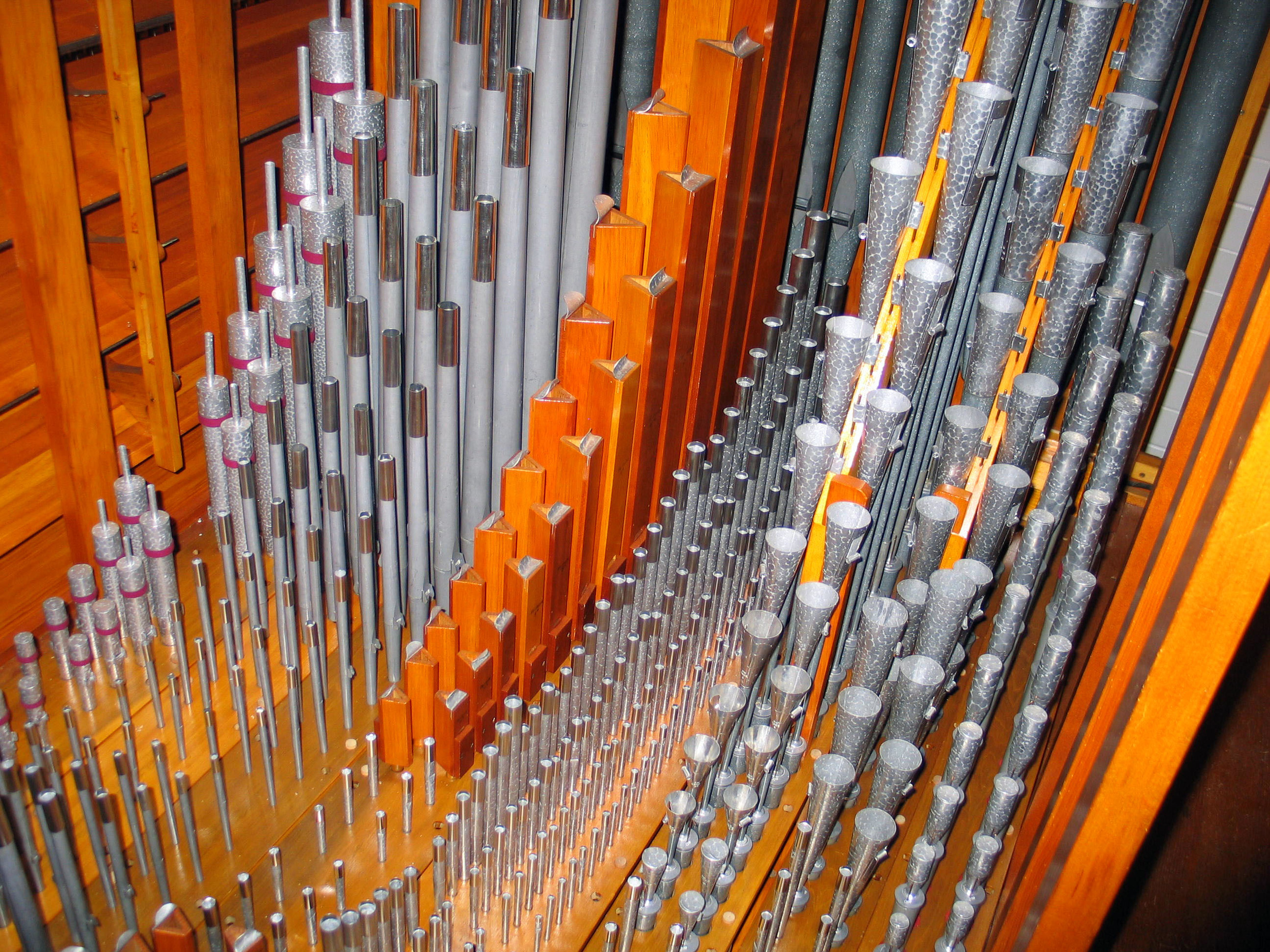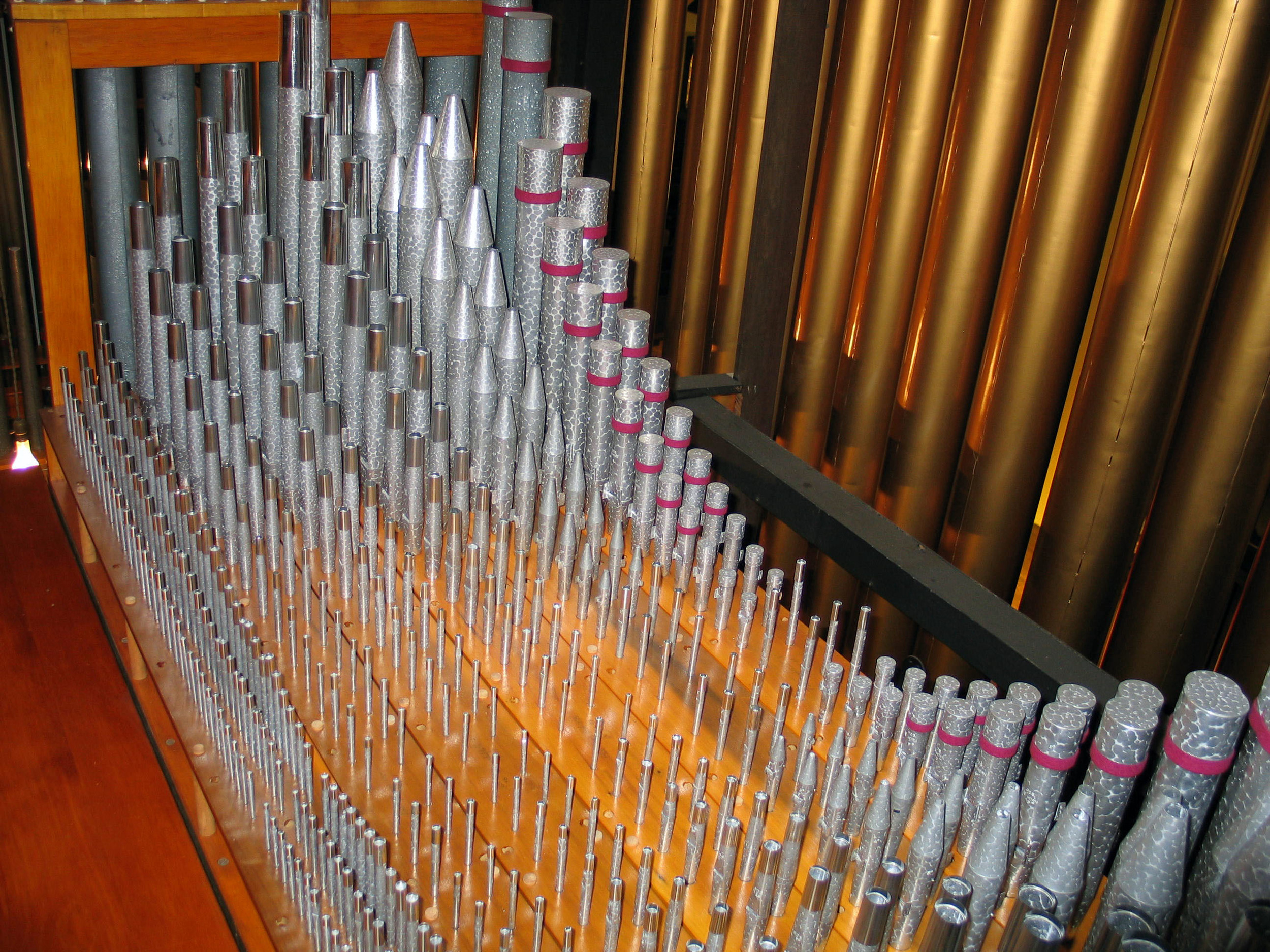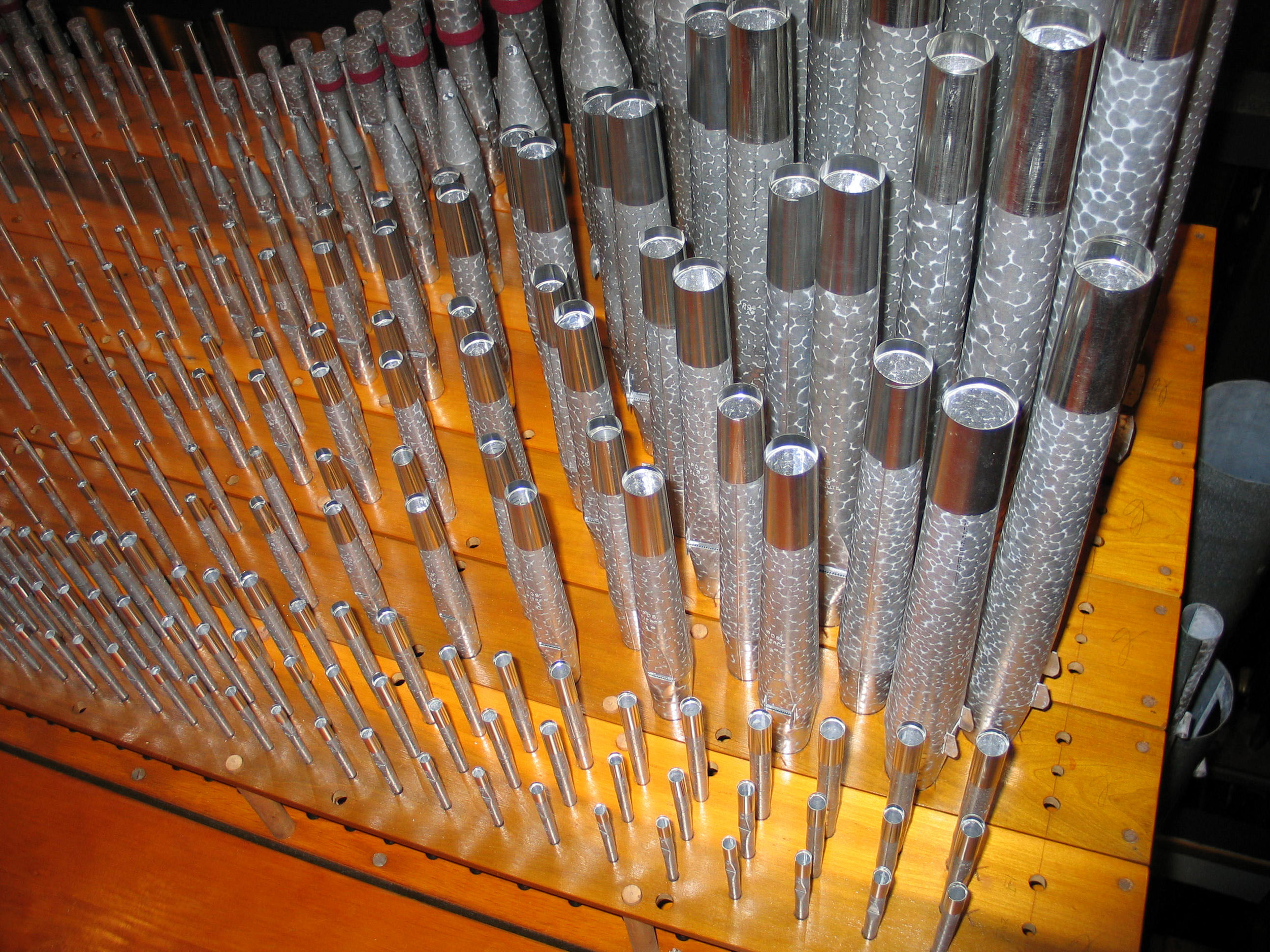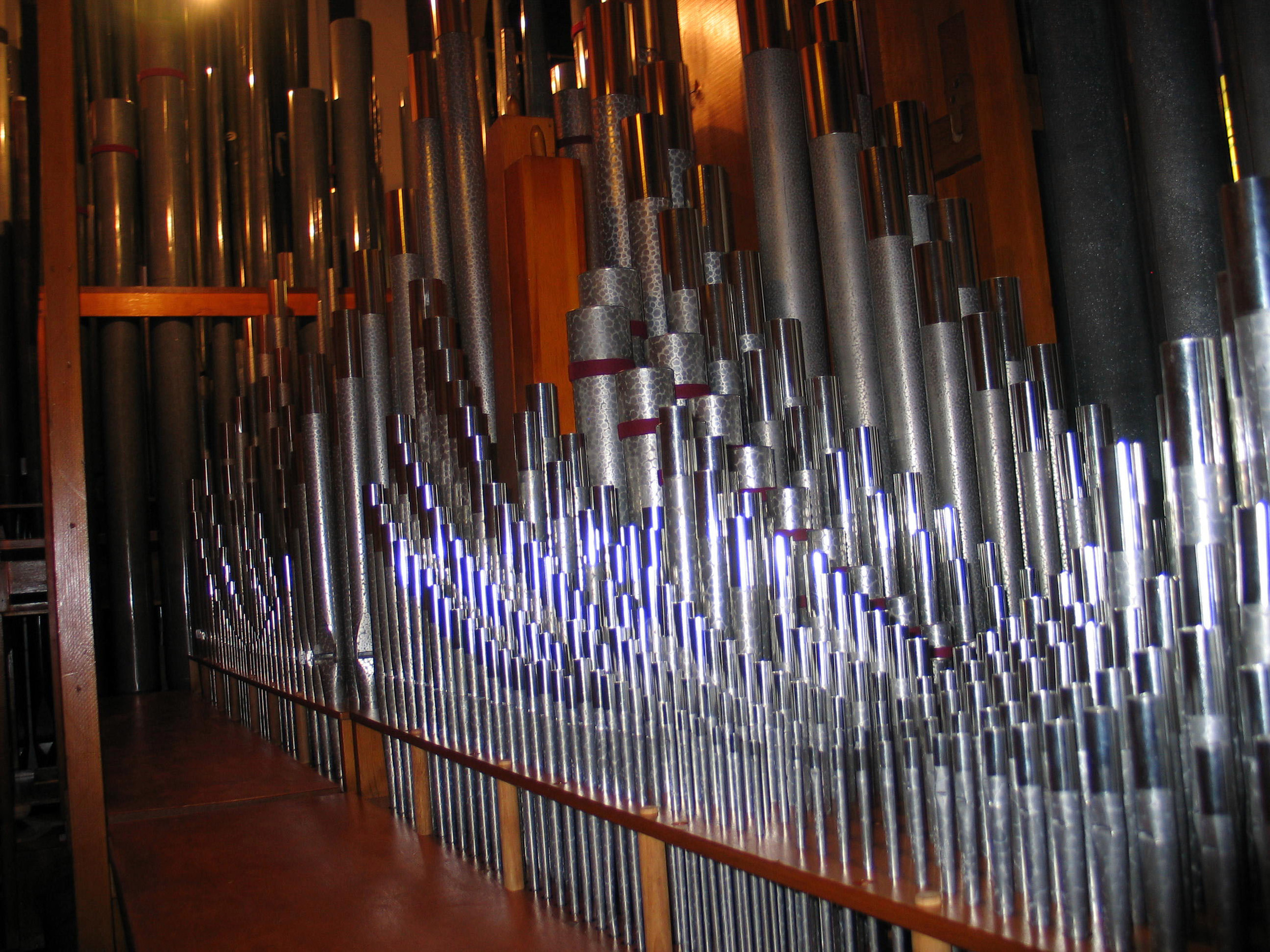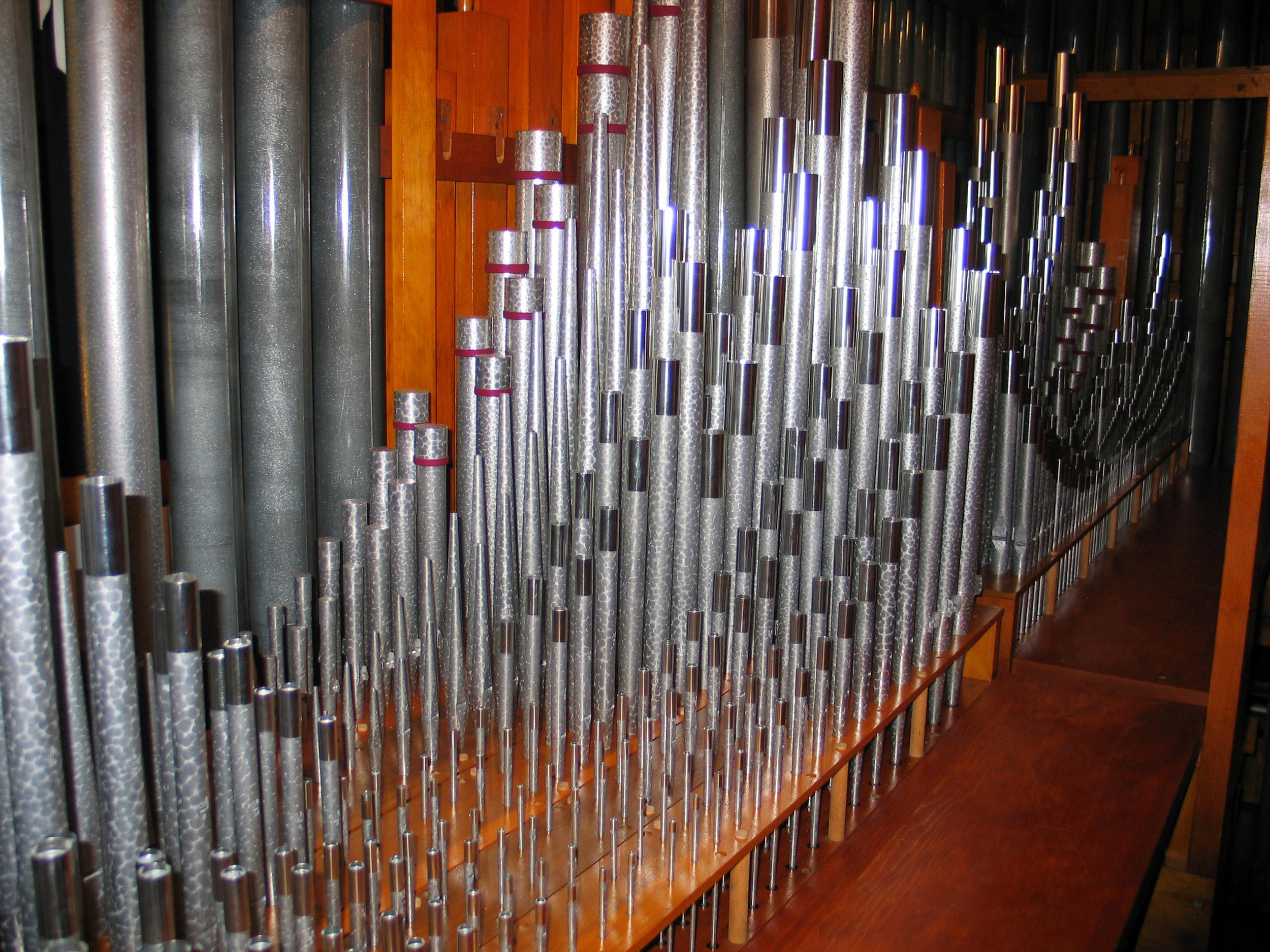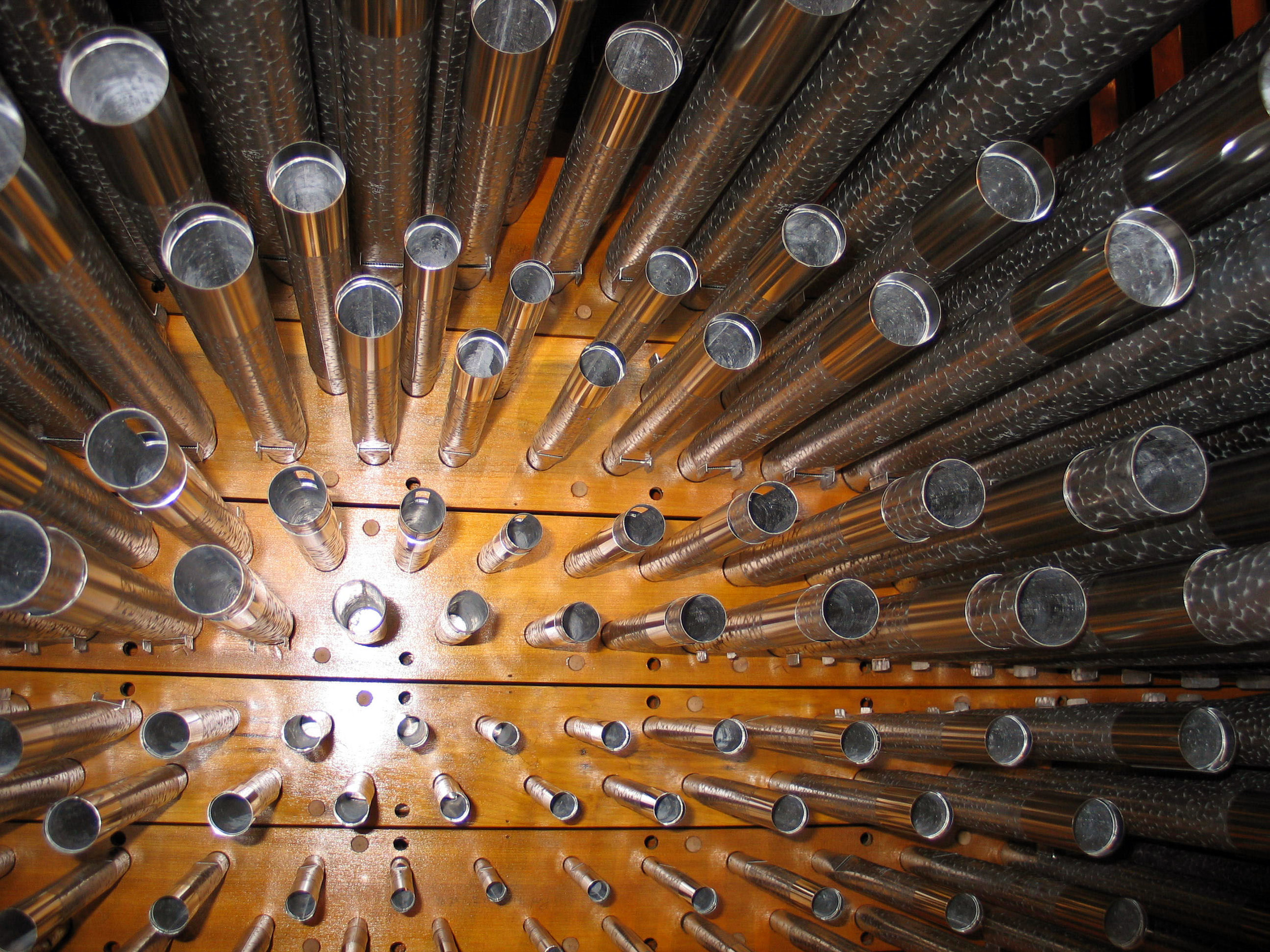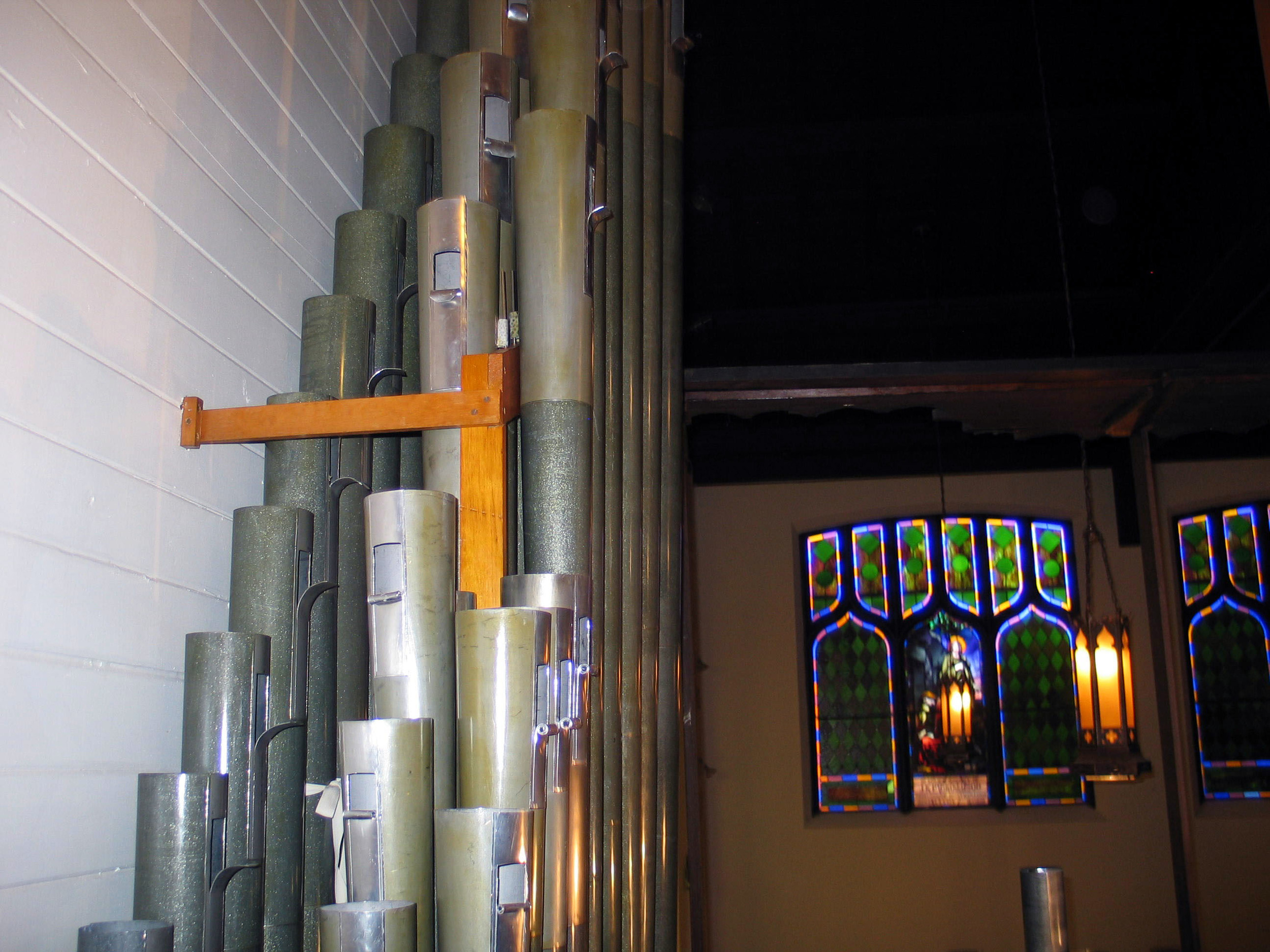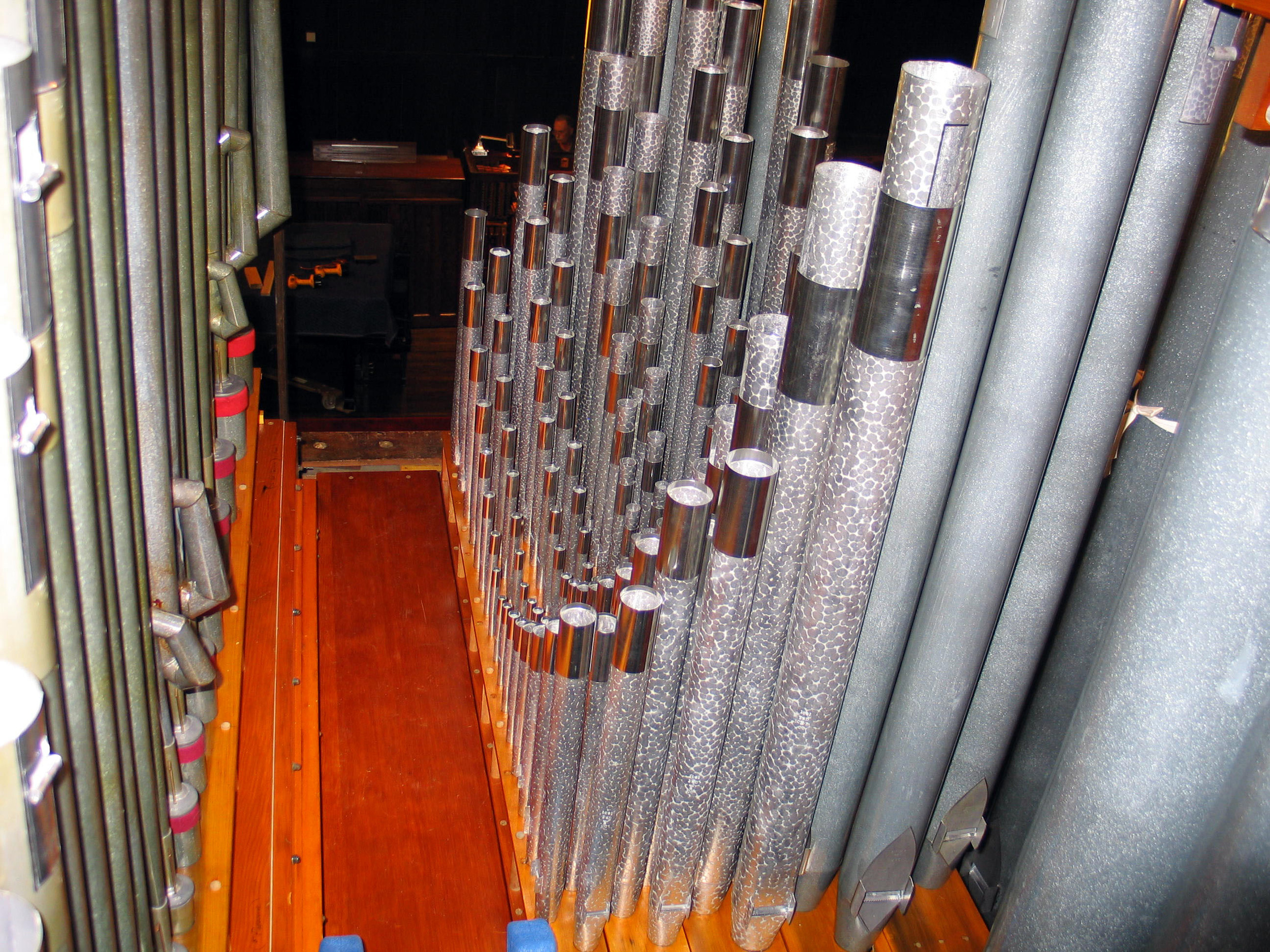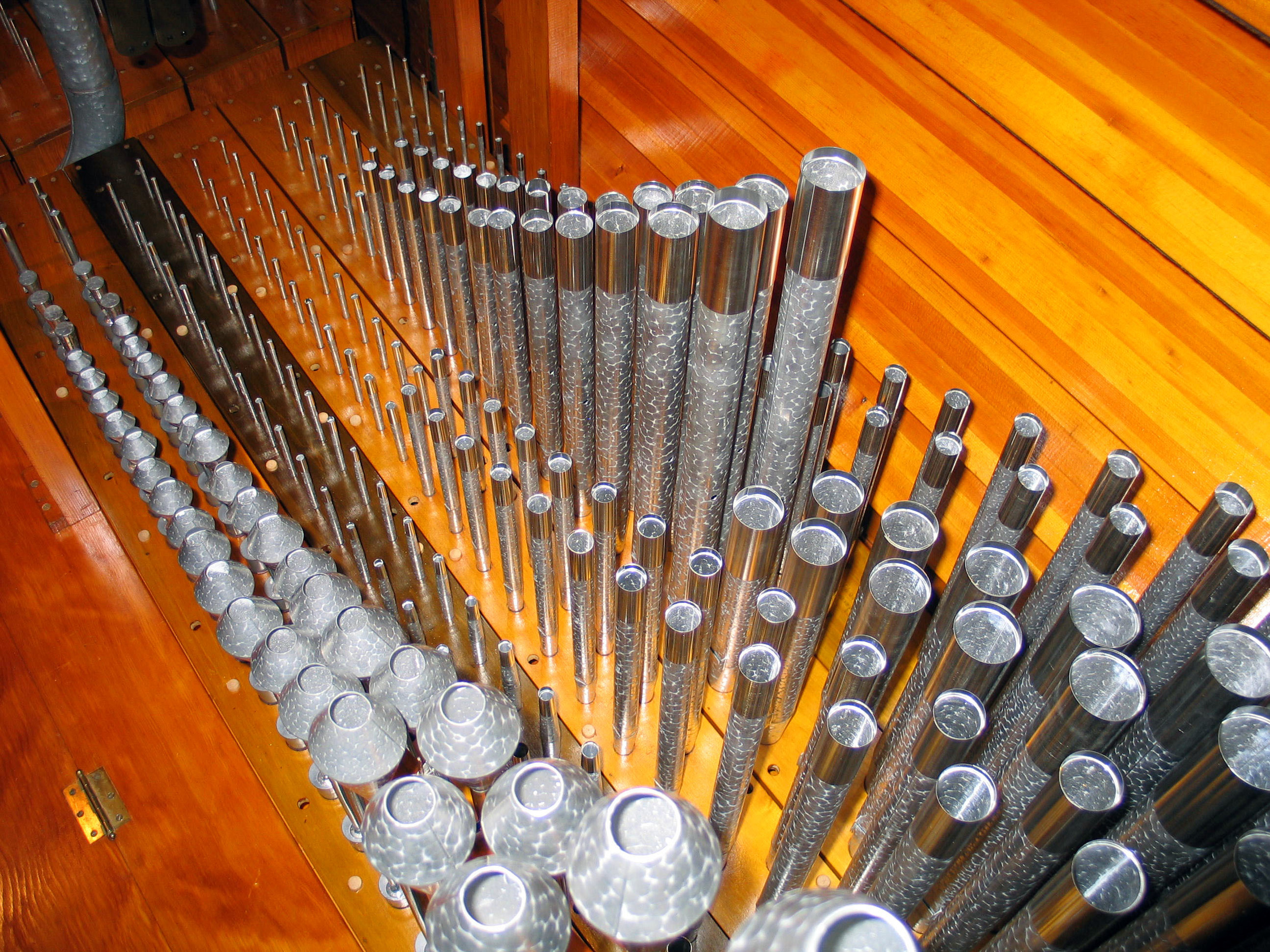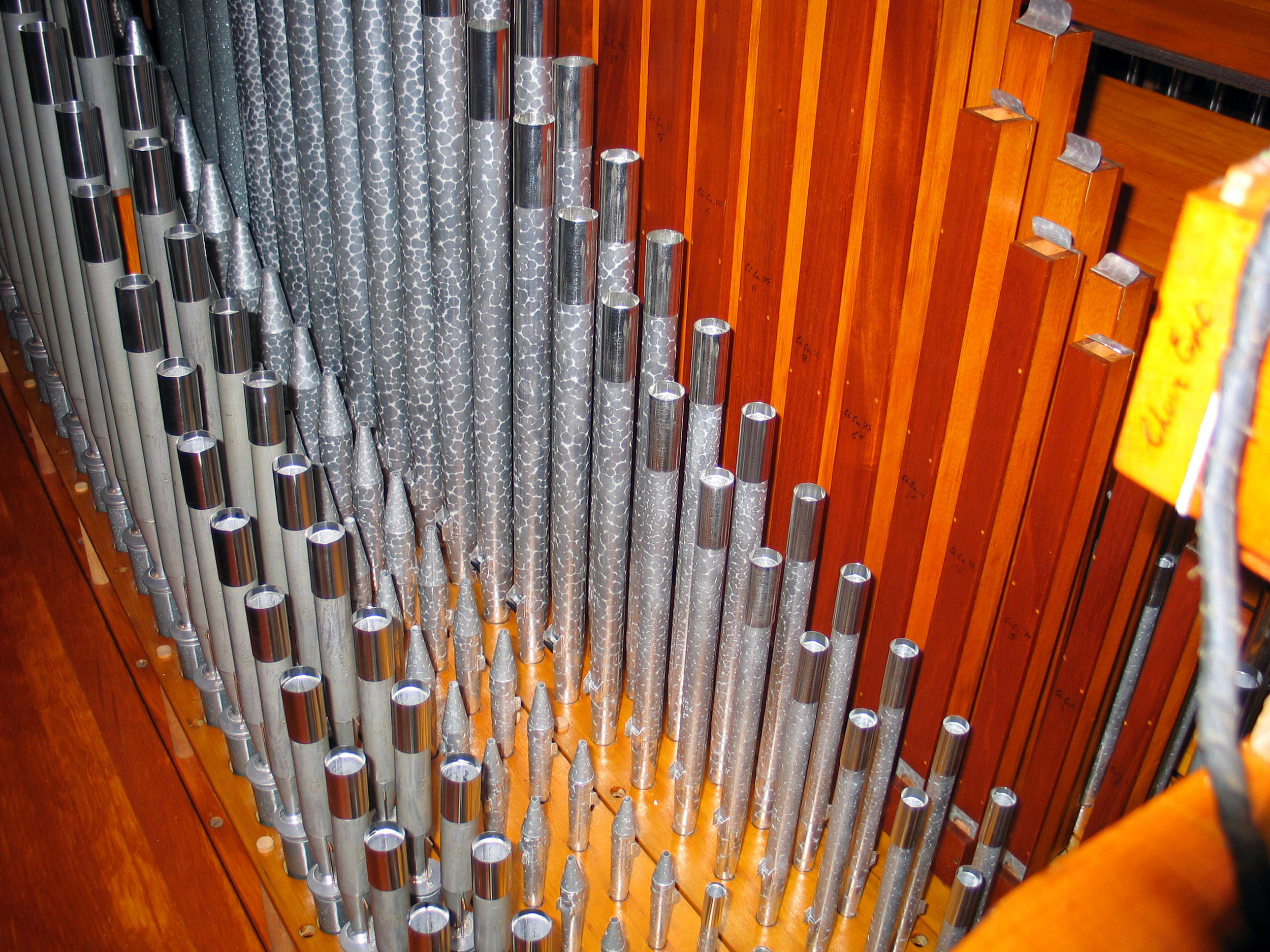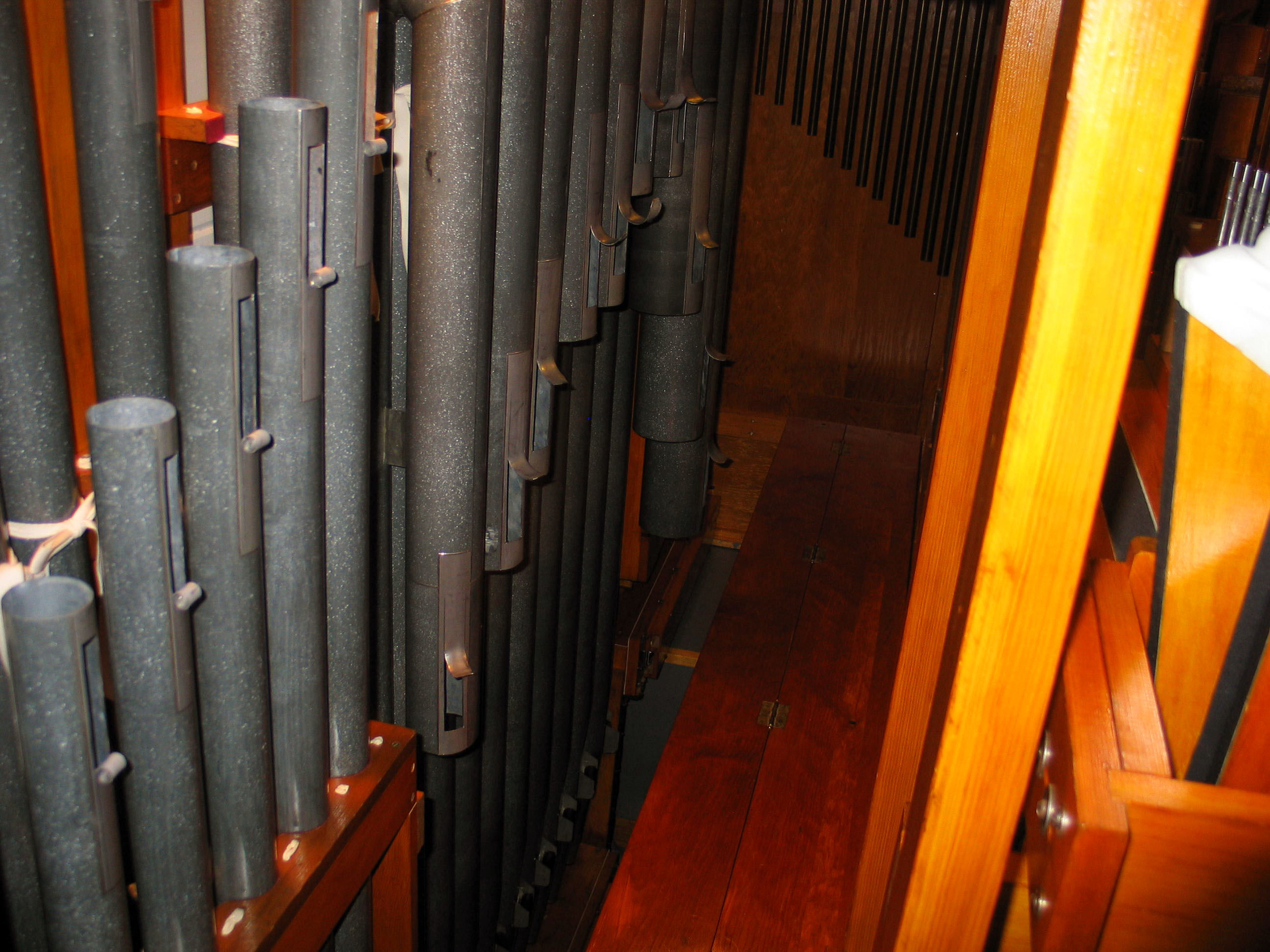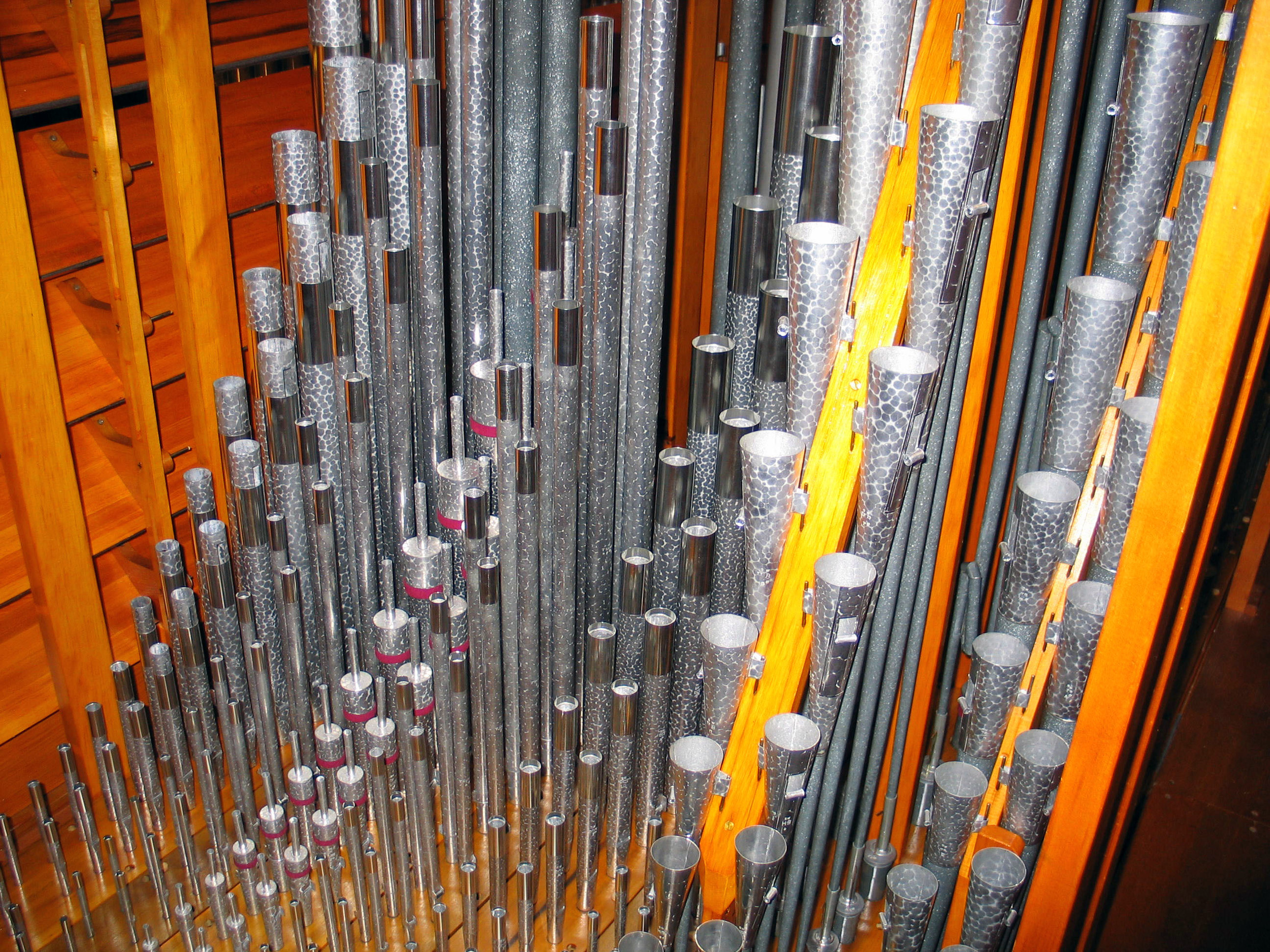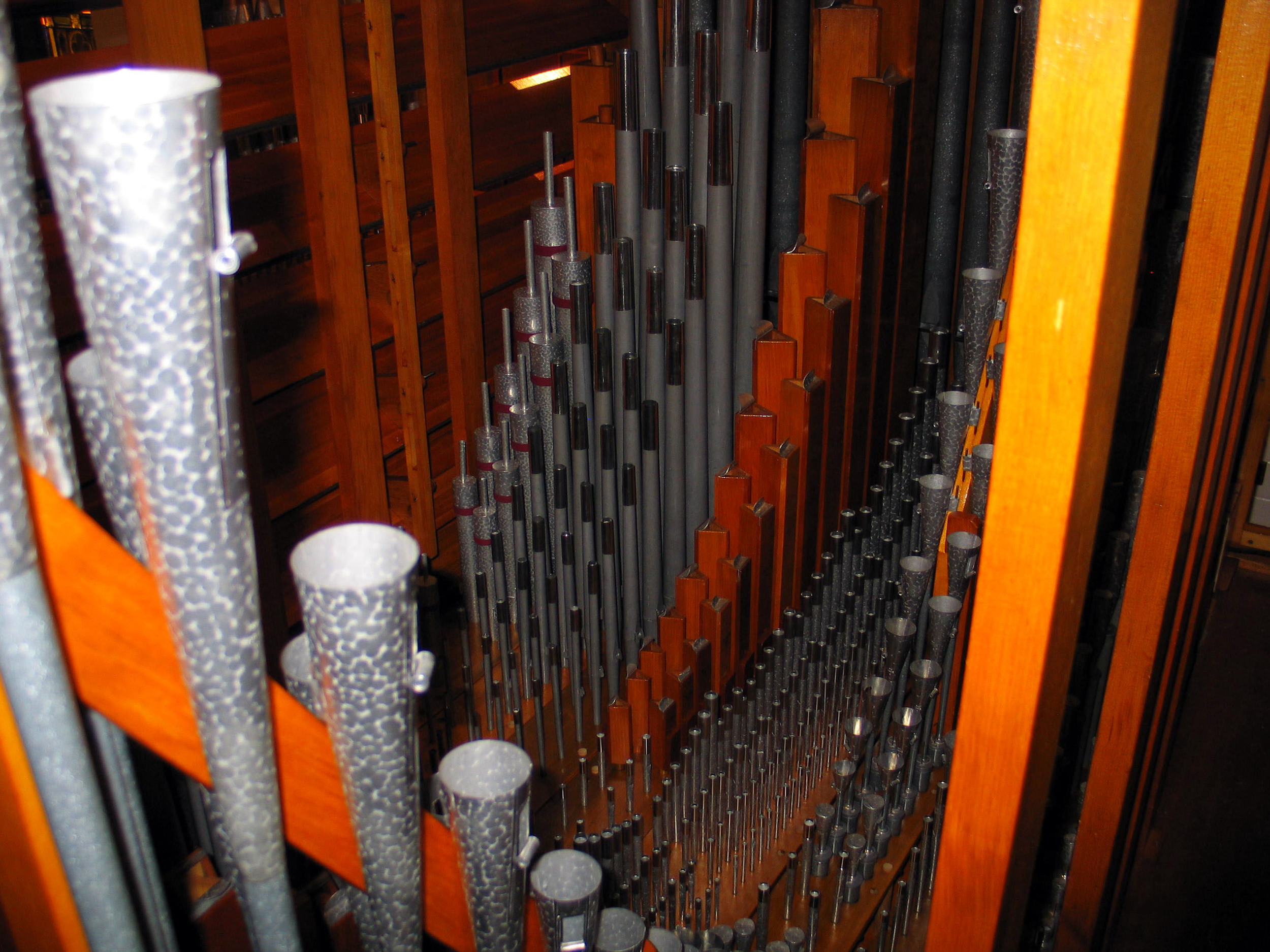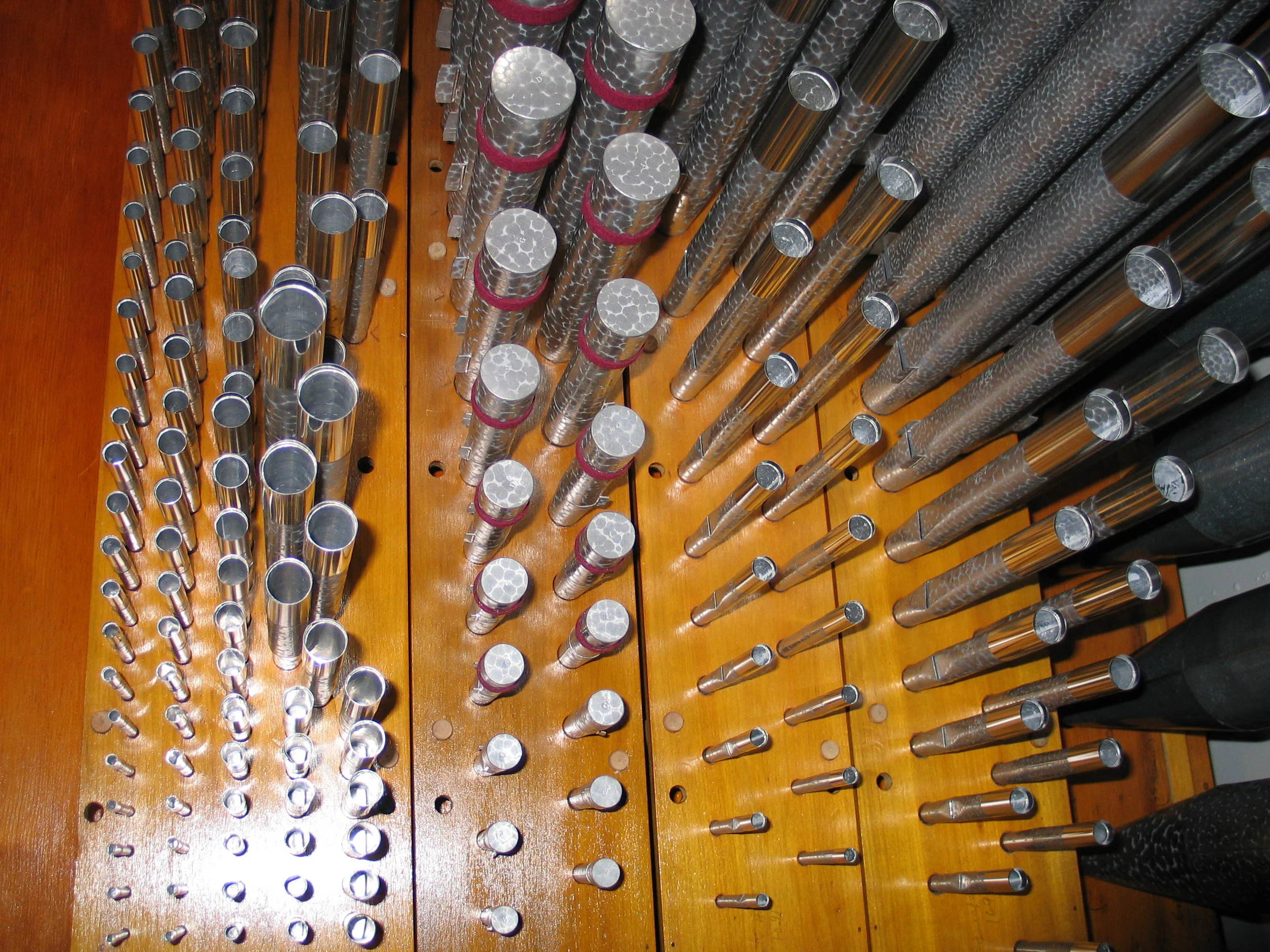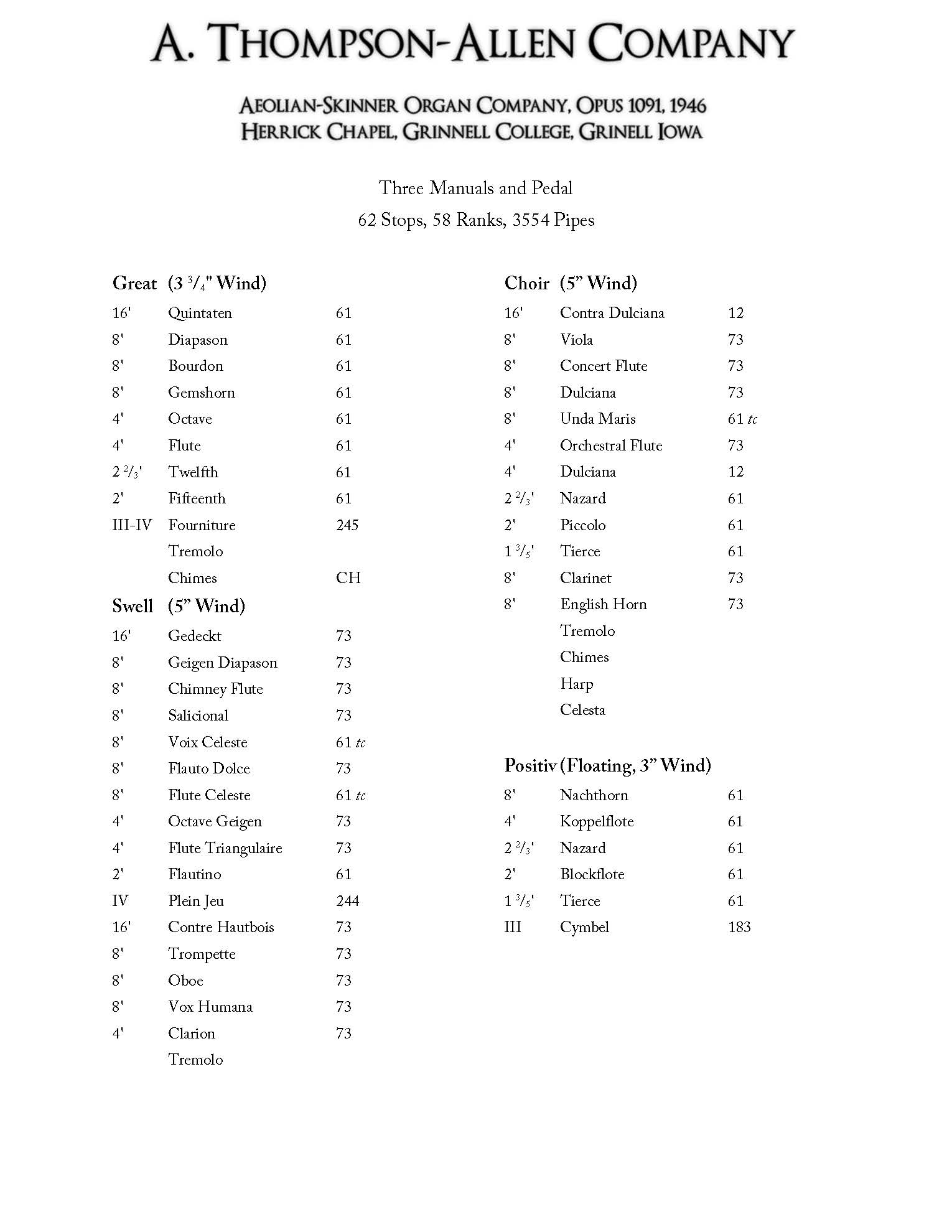Herrick Chapel at Grinnell College
Grinnell, Iowa
Aeolian-Skinner Organ Company, Opus 1091, 1946
Surrounded by farmlands planted in thick carpets of corn, Grinnell, Iowa, is considered one of the most livable small towns in America. Founded in 1854 by abolitionist minister Josiah B. Grinnell, it is home to the college that now bears his name, first established in Davenport in 1846 as Iowa College. Within twenty-five years of its founding, Iowa College relocated to Grinnell, and in 1909 its name was changed officially to Grinnell College. Today it remains an outstanding liberal arts school that pioneered the Social Gospel Reform Movement, a tradition that continues to present times.
Herrick Chapel was dedicated in May of 1907 and first housed an organ by Lyon and Healy. This instrument served the College for about thirty years until it was rebuilt by the Kimball Organ Company in 1940. Dedicated by Clarence Dickinson, the Kimball organ had an astonishingly short lifespan. In 1948 it was replaced by Opus 1091 of the Aeolian-Skinner Organ Company, retaining only the forty-six case pipes from the Lyon and Healy instrument. On May 19, 1949 the organ was dedicated by none other than Virgil Fox.
Opus 1091 proved to be, in every sense of the word, an extraordinary instrument. Its feet firmly planted in two distinctly different soils, not only did it feature a Flute Celeste, English Horn, Clarinet, and Vox Humana, it also boasted a Harp/Celesta percussion stop, thought to be one of the last, if not the last such device made by Aeolian-Skinner. These Ernest Skinner-style stops were juxtaposed with a low-pressure floating Positiv division and G. Donald Harrison’s renowned American Classic scaling and halving-ratios. As if that were not diversity enough, Opus 1091 also included three electronic 32-foot stops (Contra Bourdon, Bombarde and Fagot) that were downward extensions of their pneumatic siblings, and which were designed and executed by Michael Harrison, son of the firm’s forward-looking President.
When Opus 1091 was surveyed in 2003, it was found to be in pristine, perfectly restorable condition. Always the fortunate recipient of responsible and sympathetic care over the years, the organ seemed to be waiting for the restoration that had been predicted by its builder upon its completion some fifty years earlier. Perhaps not surprisingly, the only casualty proved to be the electronic 32-foot stops, of which only the loud-speakers remained.
Restoration of the organ began in mid-2006 when Richard Houghten of Milan, Michigan removed the console for restoration. The following January began the systematic removal and restoration of the pipework and chassis within the organ chamber. After the chamber had been emptied of its contents, repair and restoration of the organ’s environment could take place. Walls, ceilings and floors were cleaned and given several fresh coats of paint to aid in delivering the organ’s sound to the listeners seated in the Chapel.
All of the organ’s pipes were washed, repaired and restored to original specifications. The fluework was restored in-house without any attempt to second-guess the builder’s intentions. Reed stops were carefully restored by Broome & Company, and now provide the organ with the éclat that Donald Harrison envisioned in 1949. All of the organ’s chassis was dismantled, cleaned, releathered and adjusted to replicate original factory standards. It is accurate to state that everything was done to make this a truly transparent restoration, one in which the original builder’s concepts and execution were respected at every step of the way. Even Aeolian-Skinner’s elegant remote electro-pneumatic machinery for the combination action was retained and restored to its original standards.
An interesting conundrum appeared when it came to the organ’s 32-foot stops. There was little room in the organ chamber for real organ pipes, nor budget for their inclusion. And as much as the restorers resisted the thought of non-pipe sound generation in the organ, the original builder of the instrument made no apologies for the installation of such effects. Even though Michael Harrison downplayed the authenticity and effectiveness of such voices in his later years, claiming that they remained “underdeveloped” when he left Aeolian-Skinner, the restorers were left with the dilemma of either replicating the original stops with modern digital voices, or leaving three stops in the Pedal Organ without bottom octaves. In the end, the missing 32-foot voices were replicated by Walker Technical Company’s contemporary versions of Michael Harrison’s experimental stops of 1948. Opus 1091 was rededicated April 3-4, 2009 in a series of events featuring Kevin Bowyer (University of Glasgow), Paul Jacobs (Julliard School of Music), and Davis Folkerts, who improvised accompaniments to the silent films Laughing Gas and The Vagabond.
At every step of the way, the restorers endeavored to stand aside and let the work of the Aeolian-Skinner Organ Company shine through. College Organist Linda Bryant threw her full support behind the restoration project, as did College President Russell Osgood and local curator Carroll Hanson, all of whom were enthusiastic about the concept of restoring Opus 1091 to its original condition. Today, more than sixty years after it was dedicated, this organ works and sounds as it did when it left the Aeolian-Skinner shops in 1948. It is the restorers’ sense that history will applaud what was done in Herrick Chapel, and that musicians and historians of the future will be grateful that one of Donald Harrison’s larger and more interesting instruments survived a critical moment in its life, and now serves to teach the future about the past.
AFTER RESTORATION
